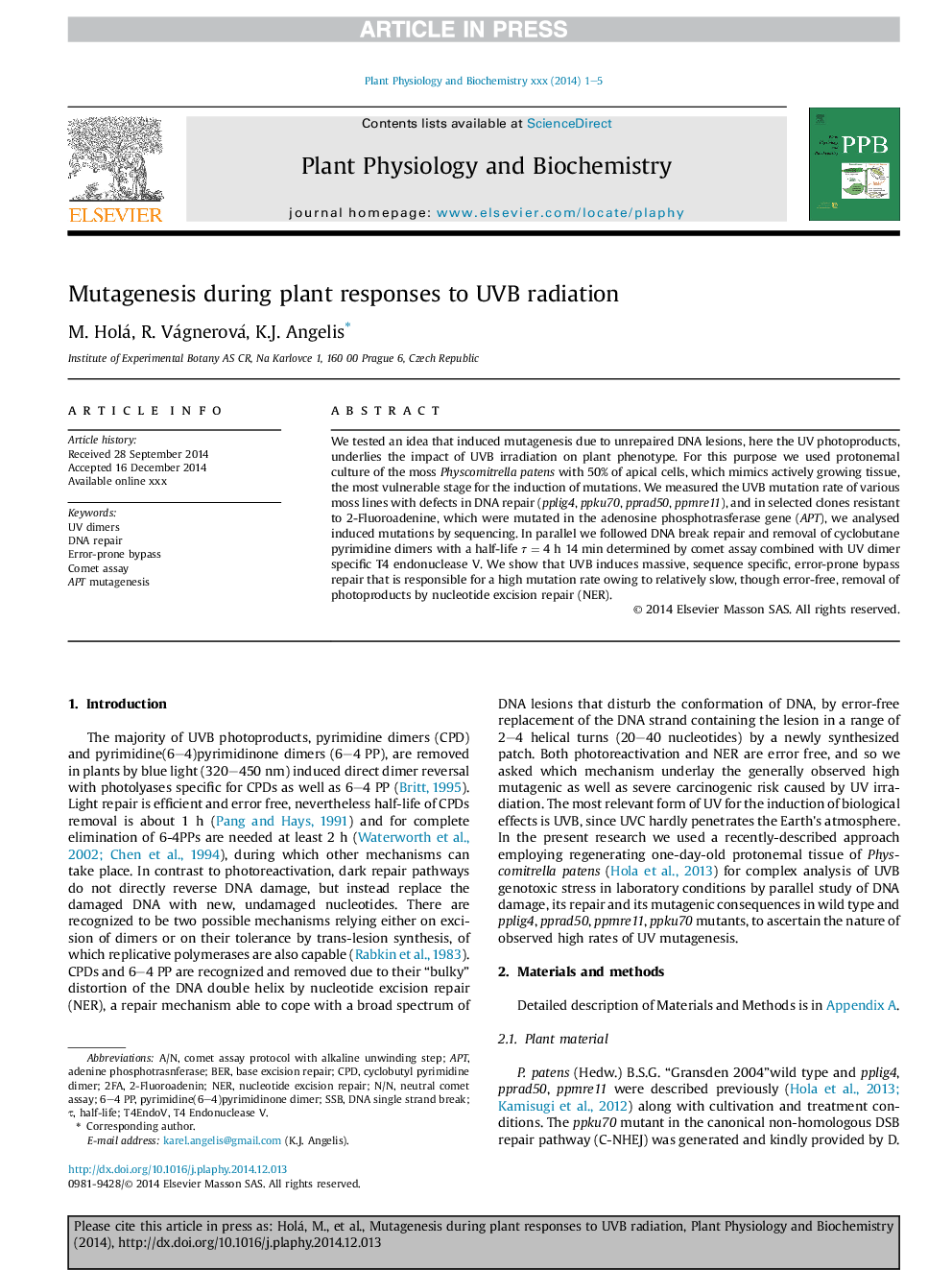| Article ID | Journal | Published Year | Pages | File Type |
|---|---|---|---|---|
| 8354839 | Plant Physiology and Biochemistry | 2015 | 5 Pages |
Abstract
We tested an idea that induced mutagenesis due to unrepaired DNA lesions, here the UV photoproducts, underlies the impact of UVB irradiation on plant phenotype. For this purpose we used protonemal culture of the moss Physcomitrella patens with 50% of apical cells, which mimics actively growing tissue, the most vulnerable stage for the induction of mutations. We measured the UVB mutation rate of various moss lines with defects in DNA repair (pplig4, ppku70, pprad50, ppmre11), and in selected clones resistant to 2-Fluoroadenine, which were mutated in the adenosine phosphotrasferase gene (APT), we analysed induced mutations by sequencing. In parallel we followed DNA break repair and removal of cyclobutane pyrimidine dimers with a half-life ÏÂ =Â 4Â h 14Â min determined by comet assay combined with UV dimer specific T4 endonuclease V. We show that UVB induces massive, sequence specific, error-prone bypass repair that is responsible for a high mutation rate owing to relatively slow, though error-free, removal of photoproducts by nucleotide excision repair (NER).
Keywords
Related Topics
Life Sciences
Agricultural and Biological Sciences
Plant Science
Authors
M. Holá, R. Vágnerová, K.J. Angelis,
